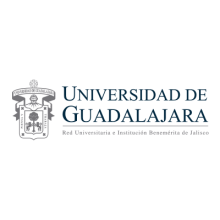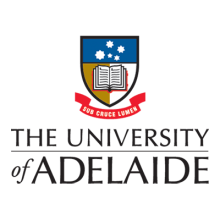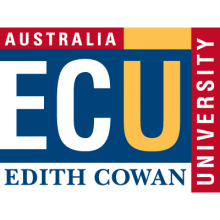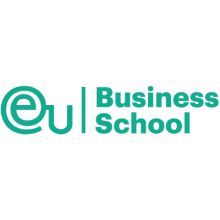关于 University Of Neyshabur
Neyshabur is one of the important cities in Khorasan Razavi Province in eastern part of Iran located in a wide, fertile plain at the southern foot of Binalood Mountain. Neyshabur has always been a significant symbol of history particularly in ancient Iran. Neyshabur, during its peak prosperity, used to be the capital of Iran. Currently, this city is considered as one of the important cultural, touristic, industrial, and historic centers of north eastern Iran. This city has been the home to internationally recognized scientists like Omar Khayyam and Attar.
Neyshabur is one of the cities in which universities have been stablished in the old times (e.g., in the eight century). However, in its modern format, University of Neyshabur was stablished in 1992. University of Neyshabur has two main campuses, one of which is located at the city center while the other is located at north west of the city.
University of Neyshabur has four faculties; one of which is the faculty of Arts. This faculty is one of the most well-known faculties of arts in the country. It is the only art faculty in east Iran. There are several well-known faculty members working in this faculty.
1) Research
Faculty members at University of Neyshabur are interested in both educational and research activities. The results of their research activities are published in numerous scientific papers and patents. The scientific articles are published in famous journals including but not limited to Nature Communications, Advanced Materials, Scientific Reports, Advanced Functional Materials, Lab on a Chip, Oncogene, Journal of Applied Physics, Applied Physic Letters, IEEE Sensors, and so on.
Faculty members in the Faculty of Art, in addition to research make artworks, wich are recognized among the best ones in the country.
2) Faculties:
University of Neyshabur is running educational and research activities with four active faculties.
a. Faculty of Basic Sciences,
Educational levels: Both undergraduate and graduate levels
Majors: Nuclear Physics, Solid Physics, Pure Mathematics, Statistics, Fundamental Particle Physics, and Physical Chemistry.
Faculty members: 23 full-time (Including Assistant Professors, Associate Professors, and one Full Professor) and seven adjunct members.
b. Faculty of Engineering
Educational levels: Both undergraduate and graduate levels
Majors: Electrical Engineering (Electronic, Power Electricity, Control, and Telecommunications), Biomedical Engineering, and Mechatronic.
Faculty members: 10 Full-time (Including Assistant Professors and Associate Professors) and five adjunct members.
c. Faculty of Humanities
Educational levels: Both undergraduate and graduate levels
Majors: Persian Language & Literature, English Language & Literature, Archeology, Sports Science, and Sociology.
Faculty members: 24 Full-time (Including Assistant Professors and Associate Professors) and 18 adjunct members.
d. Faculty of Arts
Educational levels: Both undergraduate and graduate levels
Majors: Sculpture, Painting, Visual Communication, Photography, and Art Research.
Faculty members: 13 Full-time members (Including Instructors, Assistant Professors, and Associate Professors).
3) Laboratories:
a. Basic Sciences Labs
Nano, Nuclear Physics, Basic Physics, Solid State Physics, Optic and Photonic, and Observatory.
b. Engineering Labs
Electrical Circuits, Electronic Circuits, PLC, Pulse and Digital Circuits, Communication Circuits, Digital Signal Processing, Digital Communications, Linear Control, Digital Control, Industrial Control, Electrical Machines, Industrial Electronics, Power Electronics, Power Circuits, Neural Engineering, Bio-Microfluidics, Intelligent Systems, Robotics, Semiconductors, Mechanical Device Design, Signal Processing and Machine Learning,
c. Humanities Labs
English Multimedia Lab and Archeology Workshop.
d. Arts Labs
Design (450 m2), Paint (300 m2), Photography (250 m2), Graphic (320 m2), and Sculpture (300 m2).
4) Facilities:
- Two libraries with more than 8000 books,
- Two computer centers,
- Two conference halls,
- Art gallery,
- Three dining halls
5) Research Center
The Research Center for Astronomy and Archeology is a research unit in University of Neyshabur. The core components of this center are the observatory, located on Pardis campus, the planetarium, located in Khayam area, as well as the Archeology Museum, located on Pardis campus. Good results are achieved by both the Astronomy and the Archeology teams.
6) Center for Neyshabur Studies
With the goal of introducing Neyshabur culture, Center for Neyshabur Studies was founded, in 2018. In this center, research in the area of Neyshabur’s historical and cultural background is conducted. Moreover, protocols and solutions in linking this great culture with the modern life are studied and developed. Dr. Hashem Sadeghi Mohsenabad is currently managing this center.
7) Department of Extra Curricular and Virtual Education
The university’s college hold various classes for the students who want to get familiar and are interested in learning about different fields and also for those who want to gain more knowledge and experience relevant to their major.
This college also welcome other interested people who do not study in the university. Some of the programs that are offered by the college are but no limited to computer programming, statistics, English language, French language, robotics, and astronomy. For example, the students are always welcome and encouraged to take part in English courses in order to improve their knowledge and language skills in practice to be able to broaden their communication and feel more confident and independent for doing English-language related tasks.
8) Industry Relations Office
University of Neyshabur is an important source of knowledge to support innovations, research, and developments in industries. Toward providing and strengthening the university-industry link, the Industry Relations Office in University of Neyshabur is established. By providing the required links, opportunities such as industrial tours, collaborations, etc. would be provided. The university-industry collaboration shapes students’ views and makes them ready for their future career.










